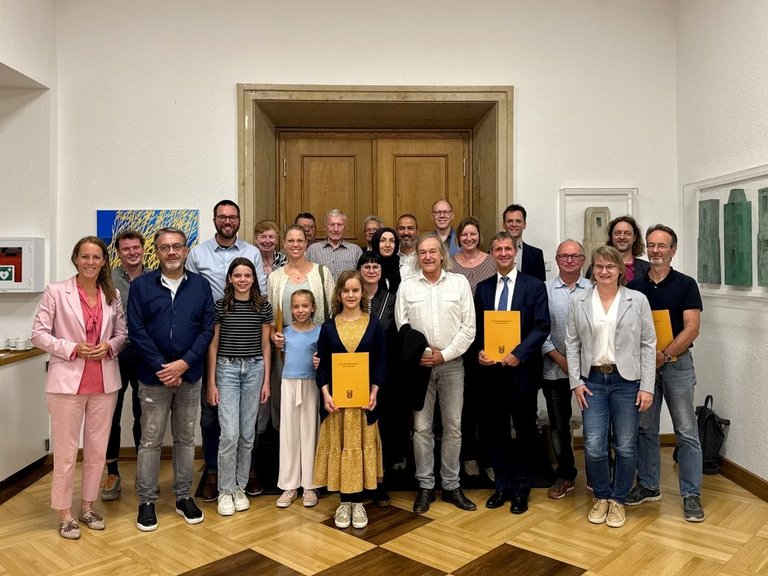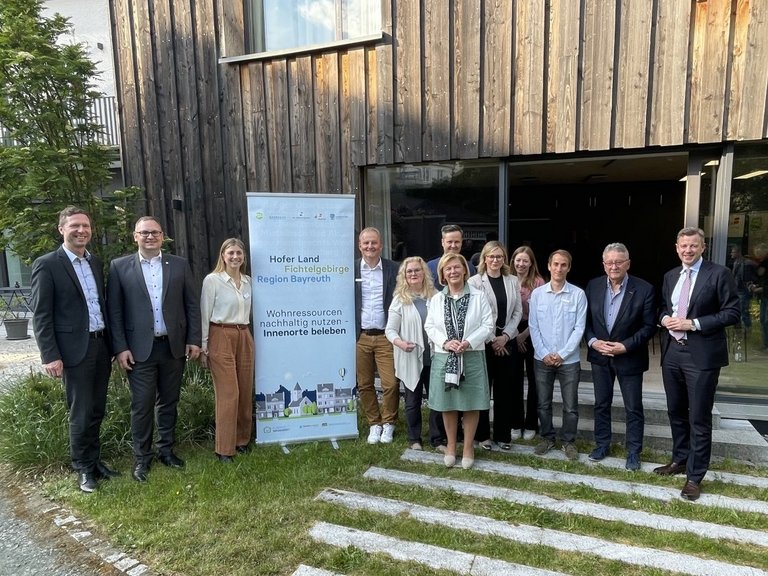Industrial Emissions Directive
Monitoring program
According to § 52a of the Federal Immission Control Act (BImSchG), the monitoring program is to ensure a scheduled and comprehensible monitoring of the plants in the area of responsibility of the district-free city of Hof. In the monitoring program, only the plants located in the area of responsibility of the district-free city of Hof are listed according to the Industrial Emissions Directive (IE-RL, in Annex 1 of the 4th Ordinance on the Implementation of the Federal Immission Control Act (BImSchV), column d marked with "E") including the water management related monitoring of discharges according to the Industrial Wastewater Treatment Plant Approval and Monitoring Ordinance (IZÜV). These facilities are listed in Appendix 1. The monitoring program was developed from the monitoring plan of the Government of Upper Franconia. This monitoring plan can be viewed on the Internet on the website of the Government of Upper Fran conia. The E plants in the urban area of Hof, for which other monitoring authorities are responsible, can be found in Annex 4 (currently not relevant for the City of Hof).

1. competence & scope
Pursuant to Art. 1 (1) and (2) of the Bavarian Immission Control Act (BayImSchG), the district-free city of Hof is the competent supervisory authority for all installations requiring a permit under the Federal Immission Control Act (BImSchG) with the exception of
- Plants of public supply for the generation of electricity, steam, hot water, process heat or heated waste gas by the use of fuels in a combustion facility, with the exception of plants for the use of biogas and of natural wood with a firing thermal capacity of less than 10 MW, as well as for electrical substations of public supply with a top voltage of 220 kilovolts or more, including switchgear panels,
- Public disposal facilities for the thermal treatment of waste and for the storage or treatment of hazardous waste for disposal,
- rendering plants and collection centers,
- facilities subject to the supervision of the mining authority, and
- other facilities for which the State Office for the Environment is responsible according to item 1.4 of the monitoring plan
in the city area of Hof.
2. evaluation scheme for routine monitoring.
The evaluation scheme for routine monitoring of E-installations is described in detail and accessible in Annex 2. § Section 52a of the BImSchG provides for risk-based plant monitoring for E-installations. The basis for this is Article 23 of the IE Directive. The period between two on-site inspections is based on a systematic assessment of the environmental risks associated with the installation and may not exceed one year for installations of the highest risk level and three years for installations of the lowest risk level. The assessment scheme reproduced in Appendix 2 is used for each facility within the scope of the monitoring program.
The evaluation scheme is divided into blocks A, B and C. First, in block A, the plant criteria are evaluated on the basis of formal criteria, which are to be applied analogously to the plants covered by the scope of the 13th and 17th BImSchV. A total of 34 points can then be awarded. From 18 points, the plant is assigned as an intermediate result to a 1-year rotation and below 18 points to a 3-year rotation. Subsequently, in block B, the intermediate result determined in A is adjusted by the operator criteria. For example, in the case of plants, participation in EMAS can lead to the plant having to be monitored in the final result (C) in a 2-year cycle (risk level 2).
If routine monitoring reveals that the operator of an installation is in serious breach of the permit, an additional on-site visit (non-routine monitoring) must be carried out within 6 months of the discovery of the breach.

3. non-routine monitoring
Non-routine monitoring shall be performed as appropriate to the situation.
In particular, "non-routine" monitoring may be required in the following cases:
- New approval of a plant (in connection with the acceptance)
- implemented modification approval (in connection with the acceptance)
- notification according to § 15 BImSchG
- non-compliance with regulations and permit conditions
- special incidents, e.g. environmentally relevant malfunctions, incidents, incidents
- to determine the proper operation after the elimination of malfunctions
- complaints
The following are the main measures to be taken:
- immediate examination of reports and documents
- On-site inspections
- Examination and, if necessary, initiation of corrective measures
- Information of other authorities concerned
4. provisions for cooperation between different monitoring authorities.
The city of Hof determines the date of the on-site inspection according to the requirements of the monitoring program and invites all affected departments. The on-site inspection by the Hof Water Management Office for monitoring the discharge in accordance with the Industrial Wastewater Treatment Plant Approval and Monitoring Ordinance (IZÜV) can be carried out at the same time as or as close as possible to the monitoring in accordance with §§ 52 and 52a BImSchG.

5. monitoring report
The monitoring report shall be drawn up by the competent monitoring authority. For each routine and non-routine monitoring pursuant to § 52a Para. 3 to 5 BImSchG, the form listed in Annex 3 shall be completed. The monitoring report shall be submitted to the operator within two months after the on-site inspection by the supervisory authority.
6. period of validity
This monitoring program is valid for an unlimited period of time. In particular, the following cases may lead to the revision of the monitoring program:
- New approval of a plant
- implemented modification permit
- notification according to § 15 BImSchG
- change in the environmental management system
- new legal situation
- new findings due to monitoring carried out
- special incidents, e.g. environmentally relevant malfunctions
7. publication
The monitoring program for E-installations shall be published on the Internet. The monitoring report shall be published on the Internet by the monitoring authority no later than four months after the monitoring has been carried out. The documents shall be published in read-only form on the Internet. Data protection in general and trade secrets in particular shall be taken into account.




